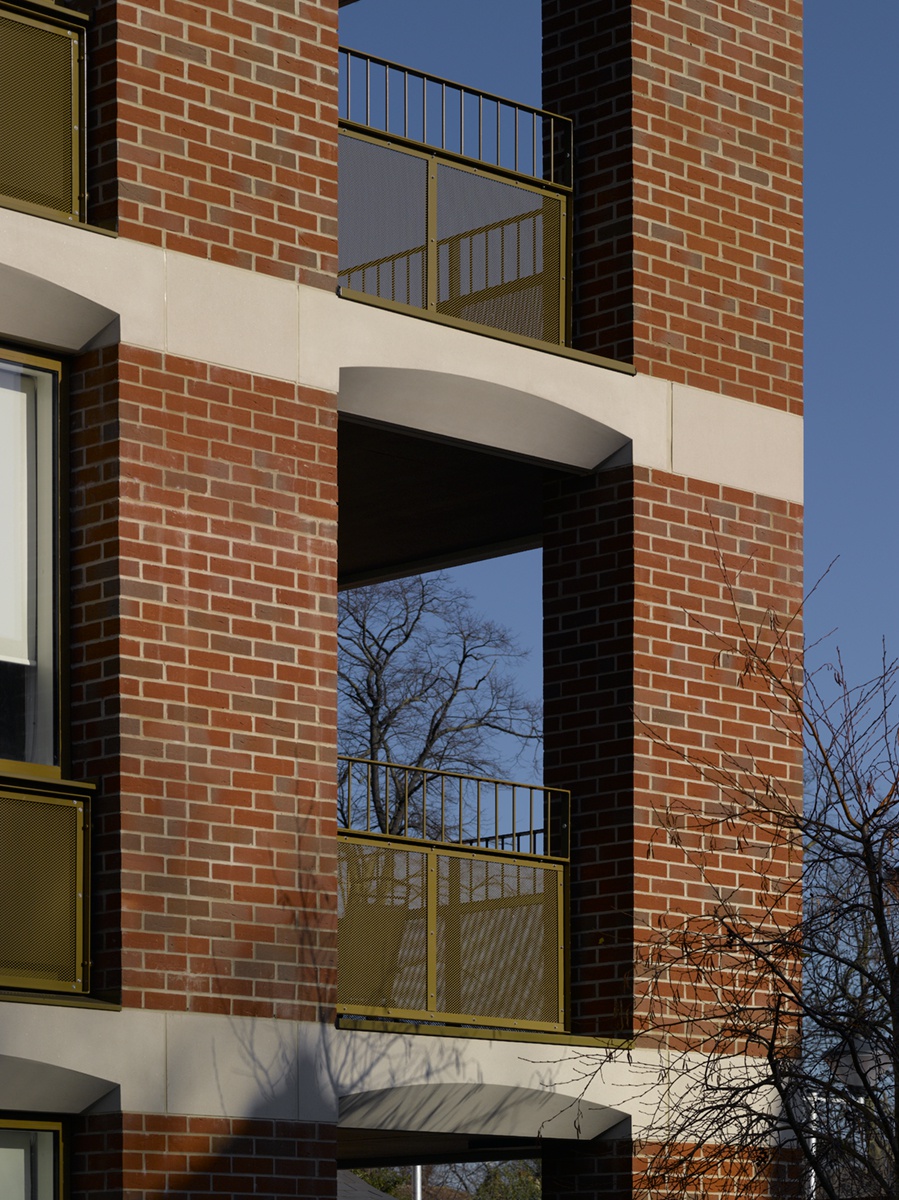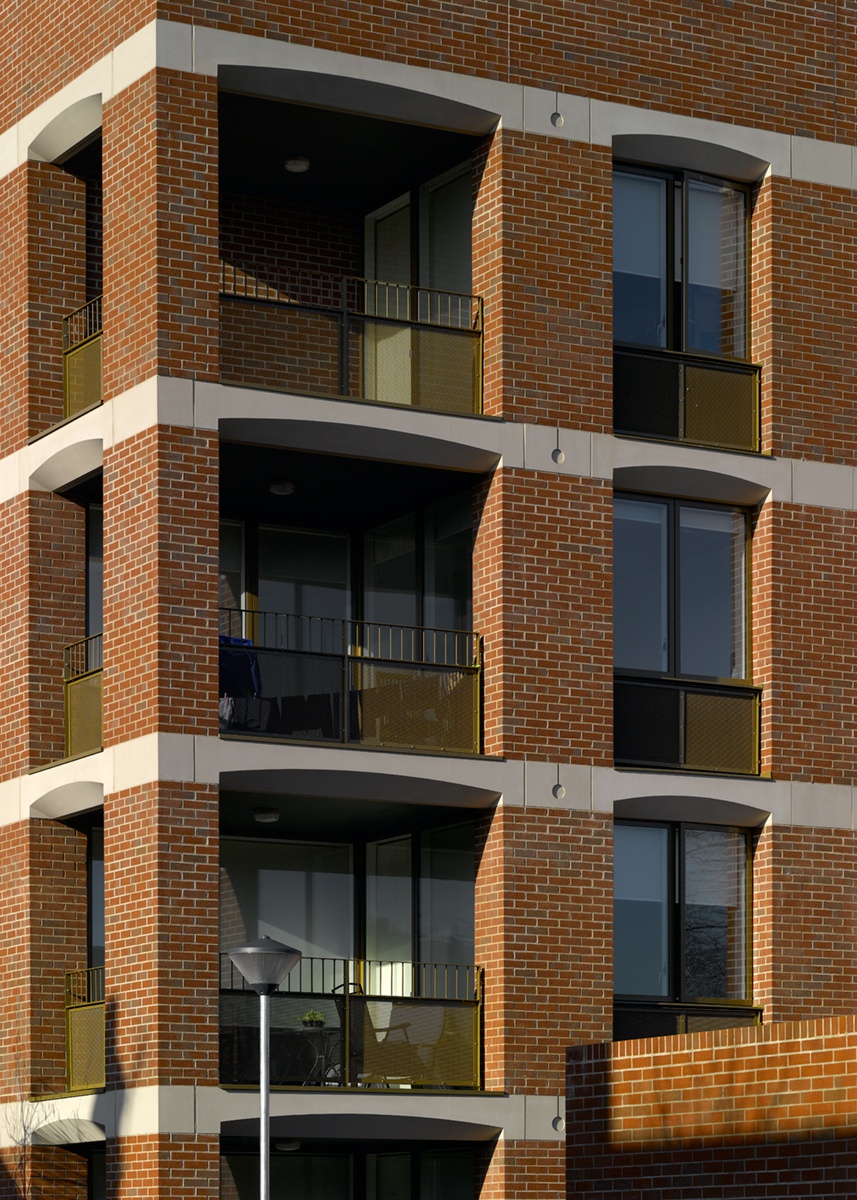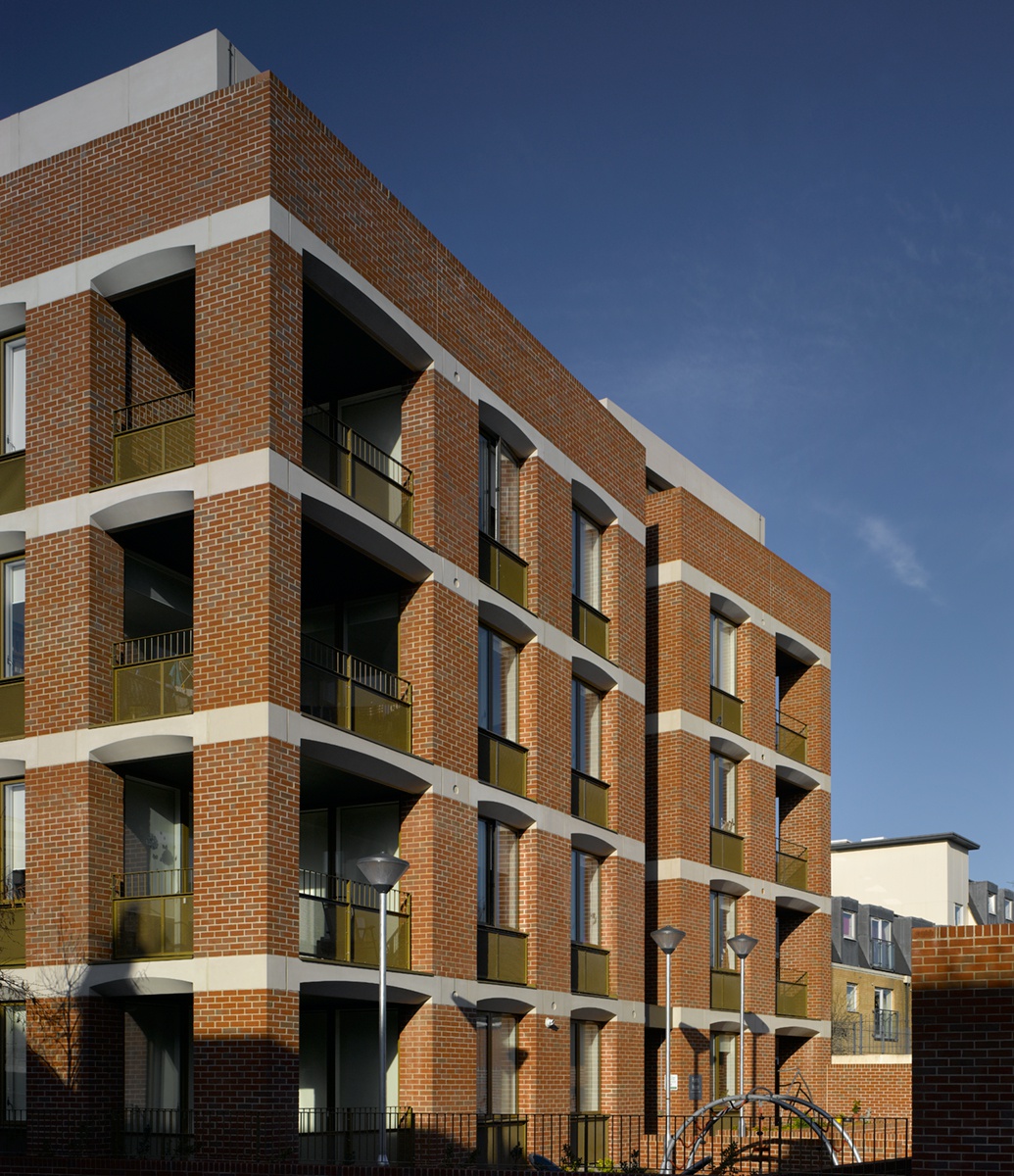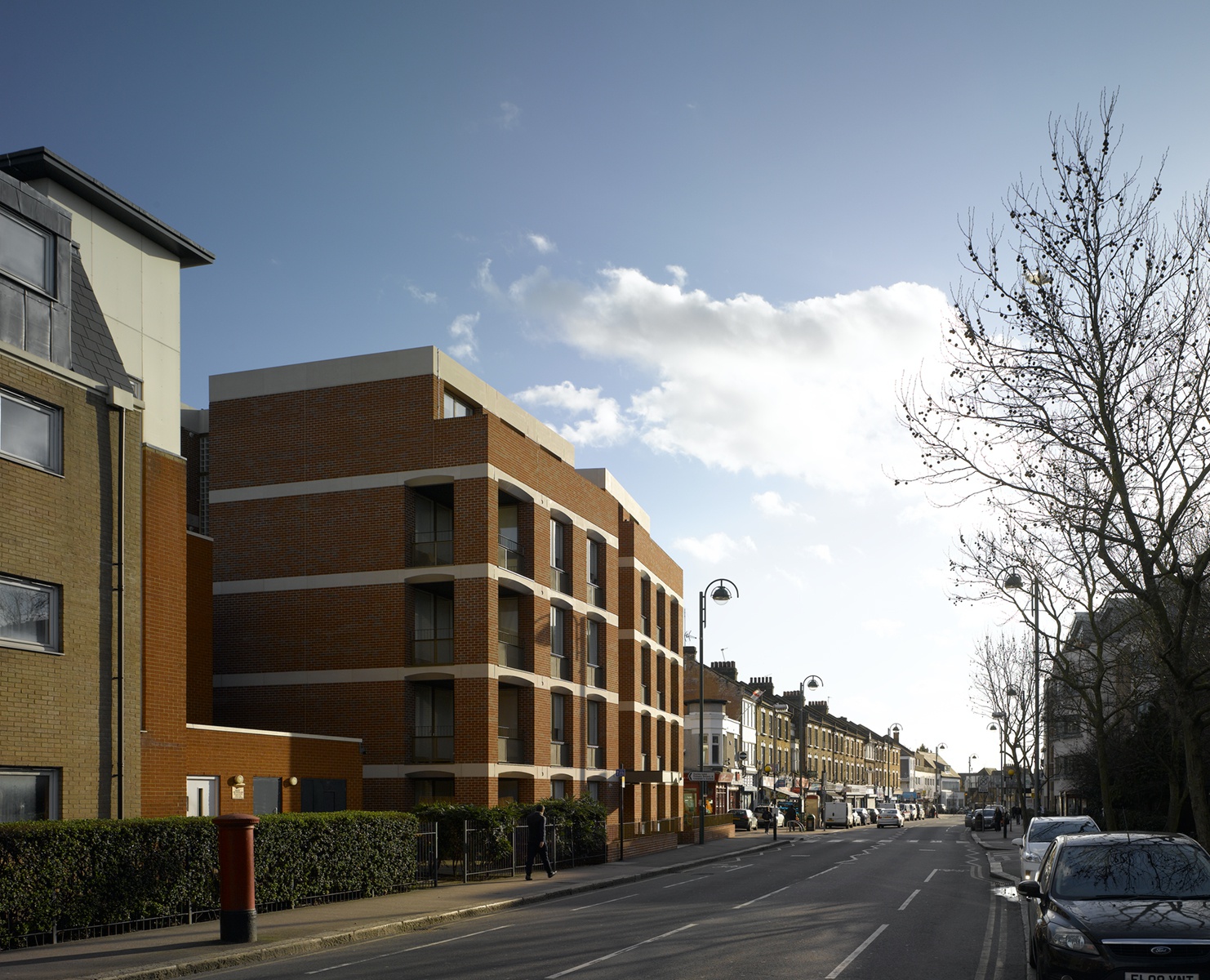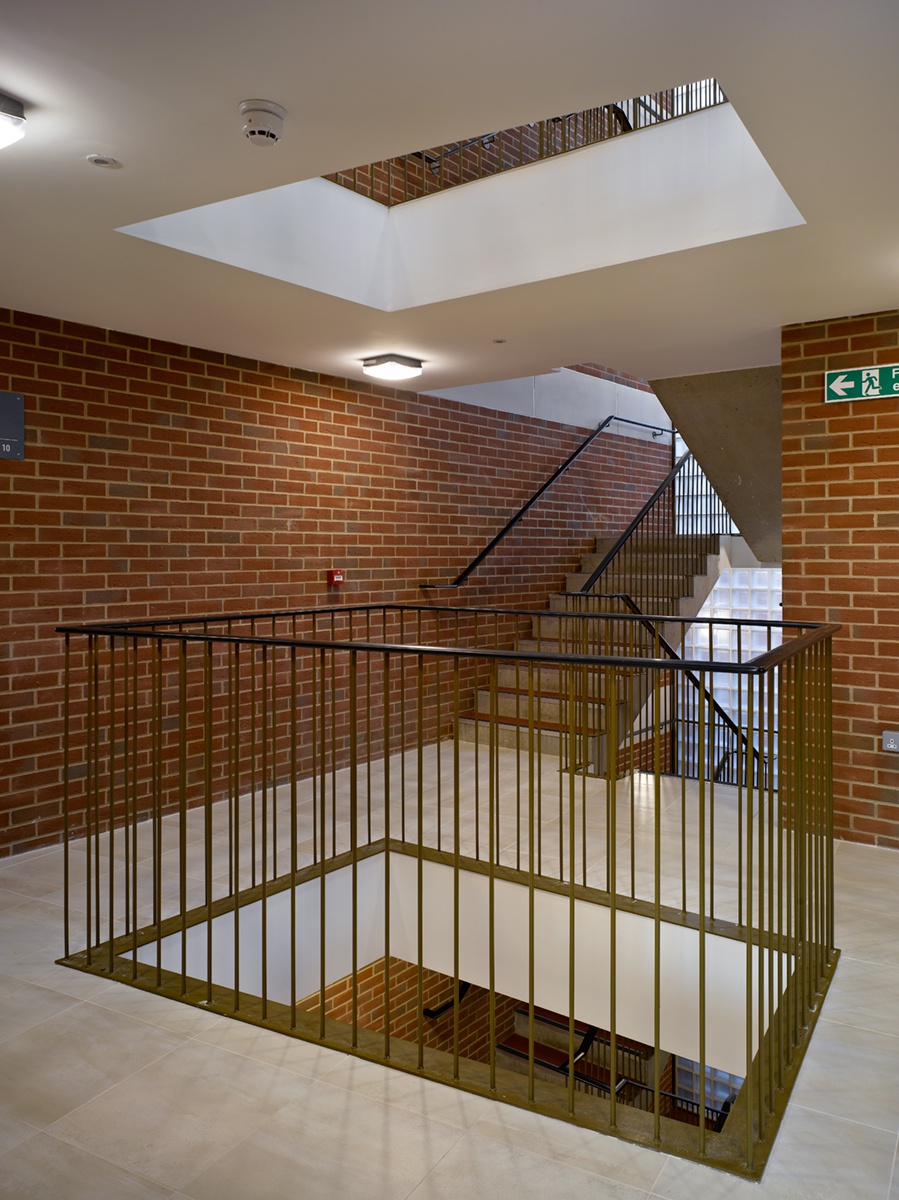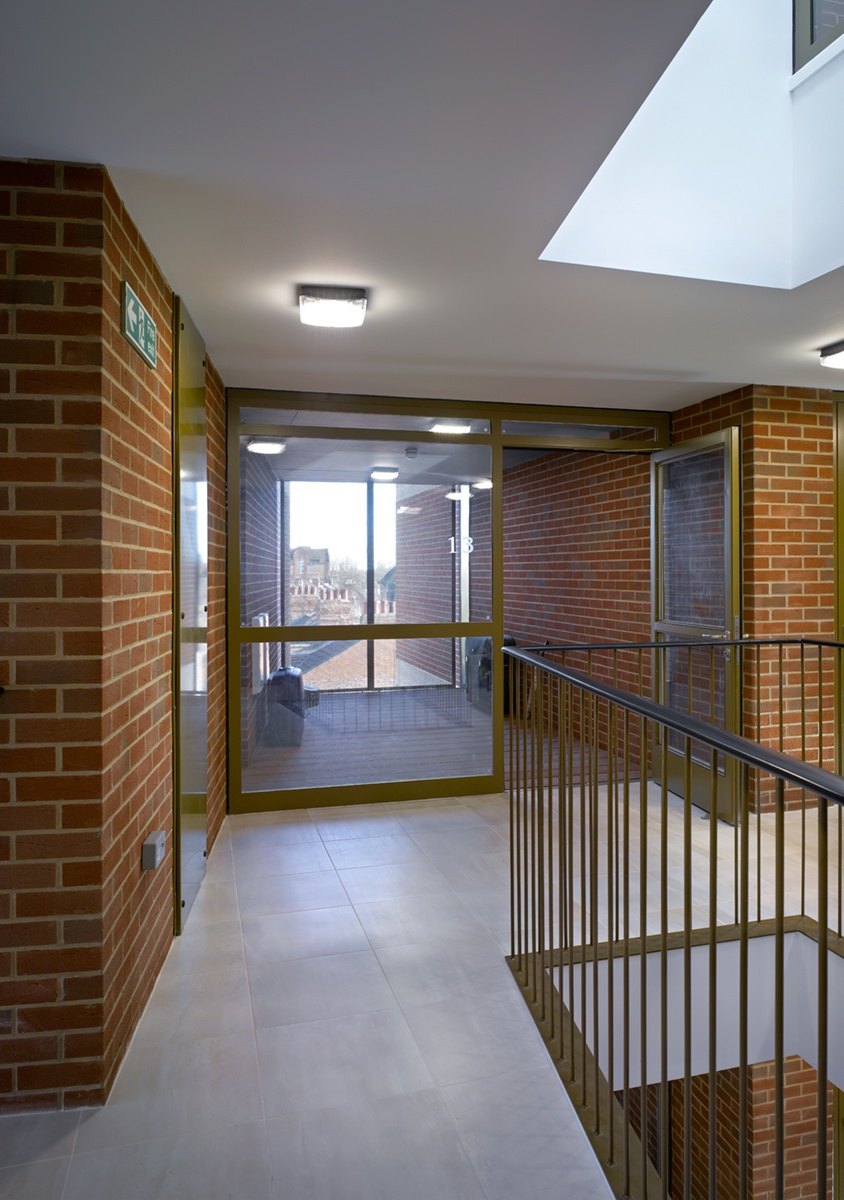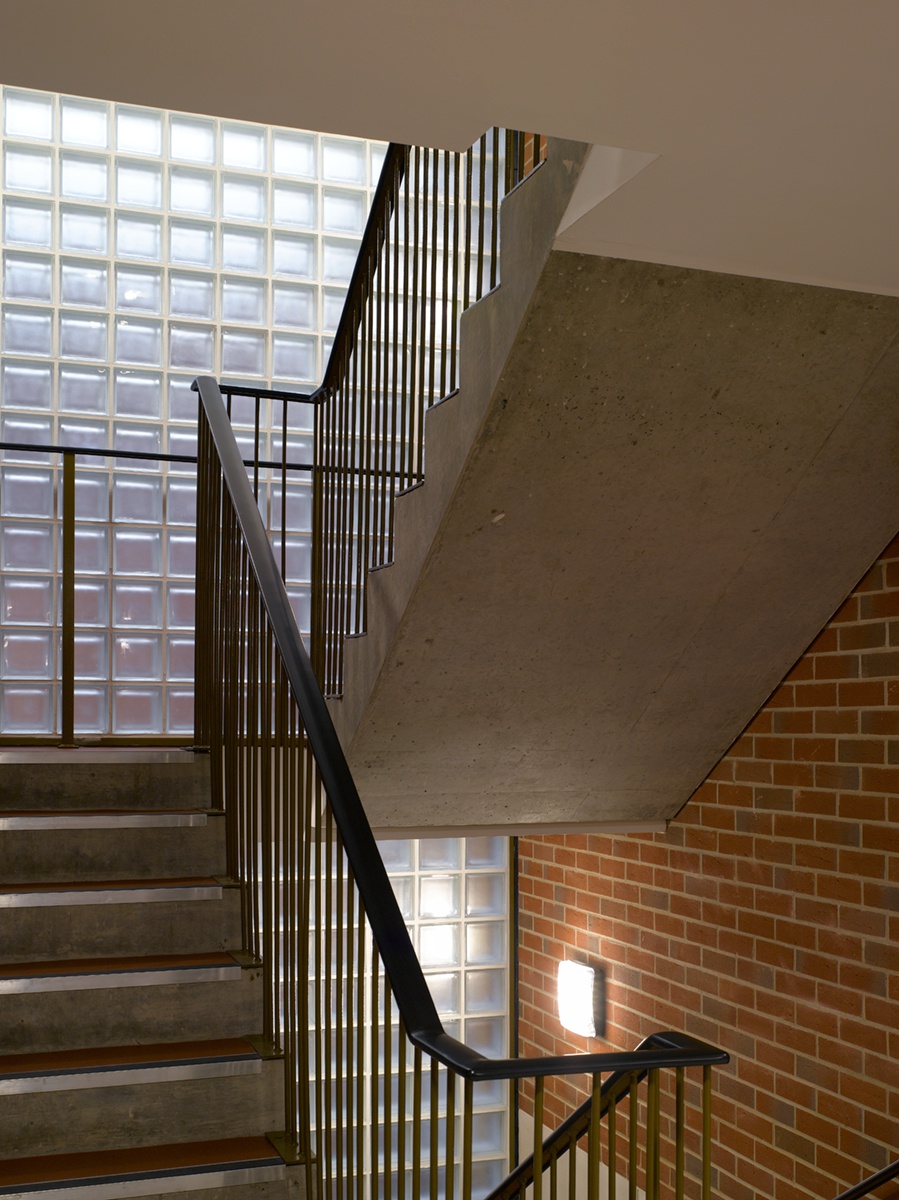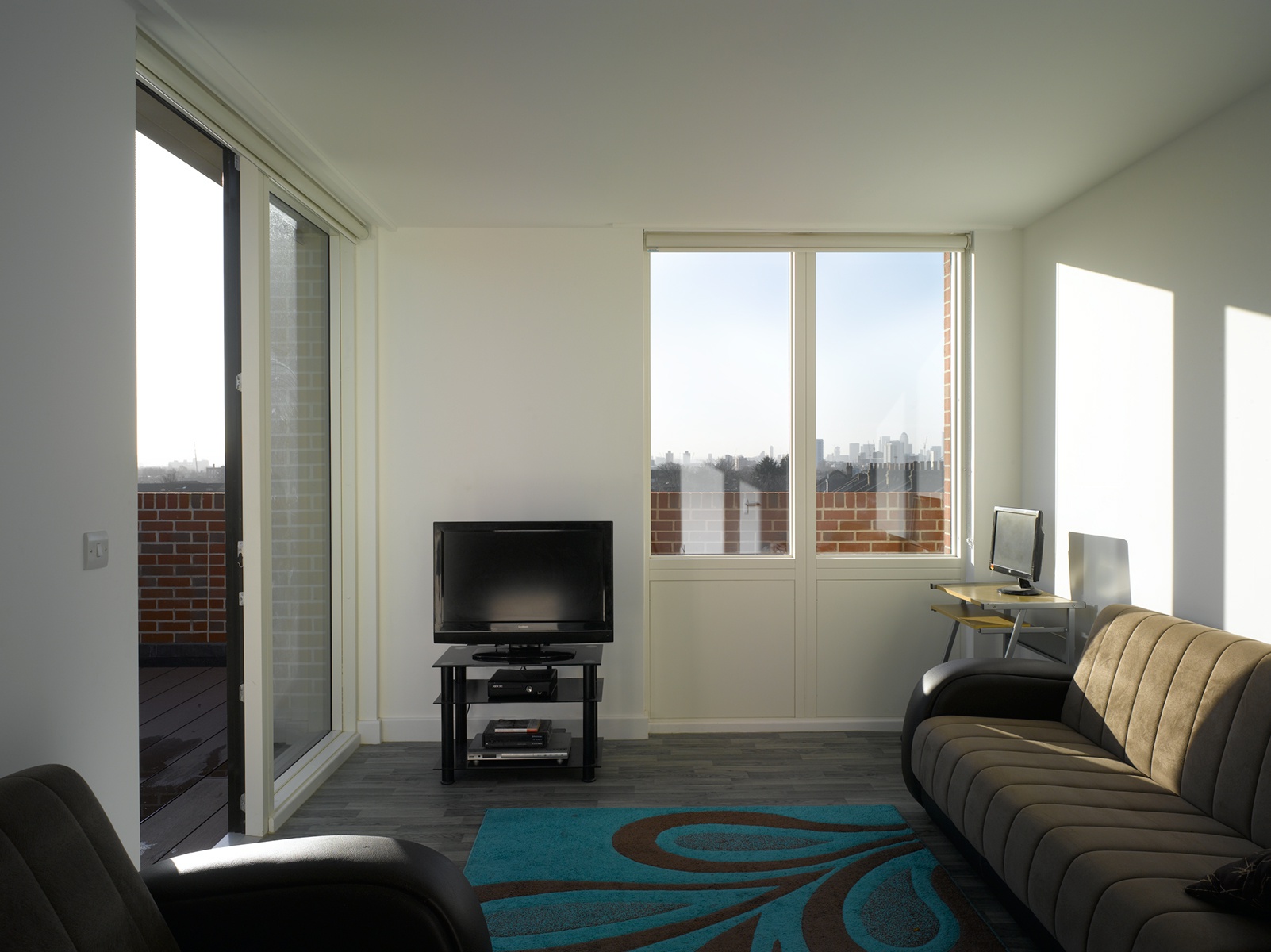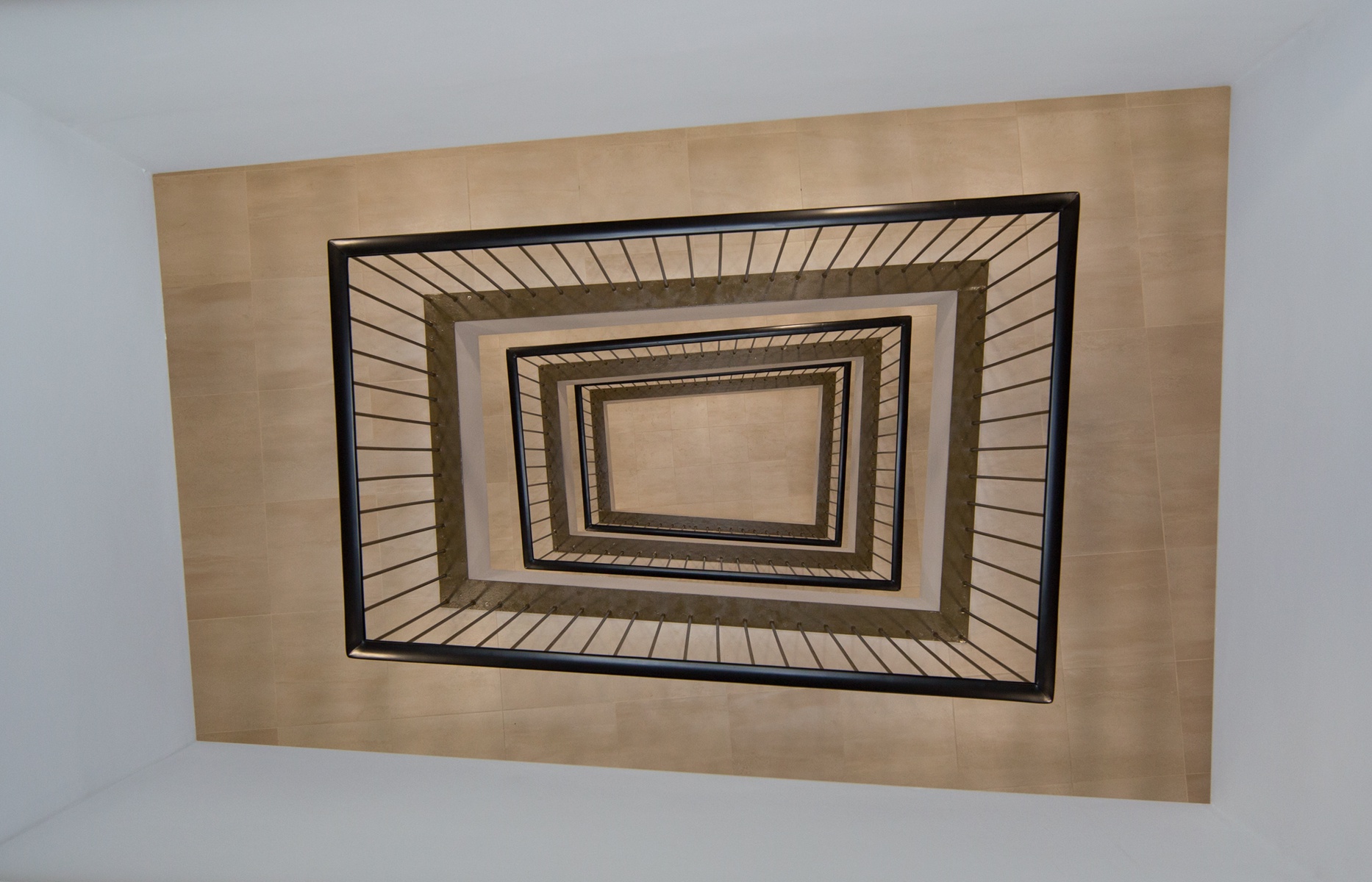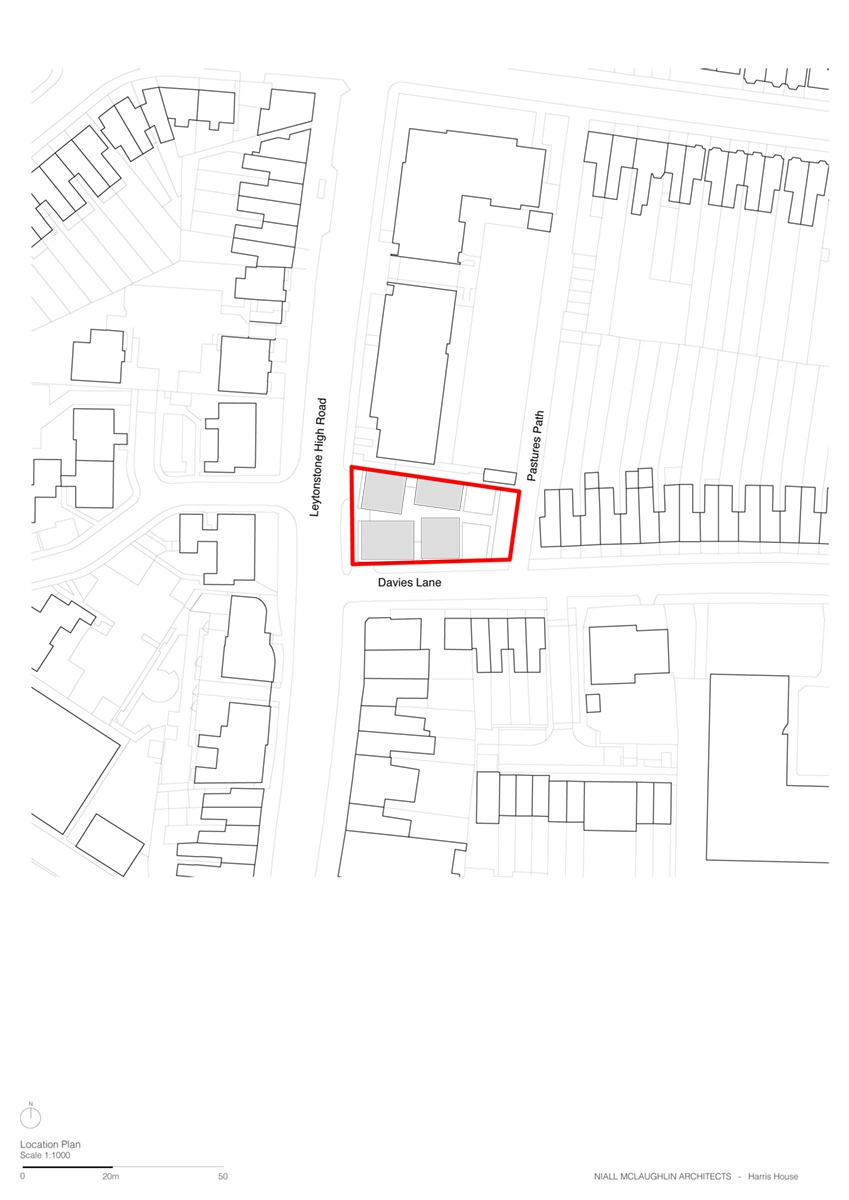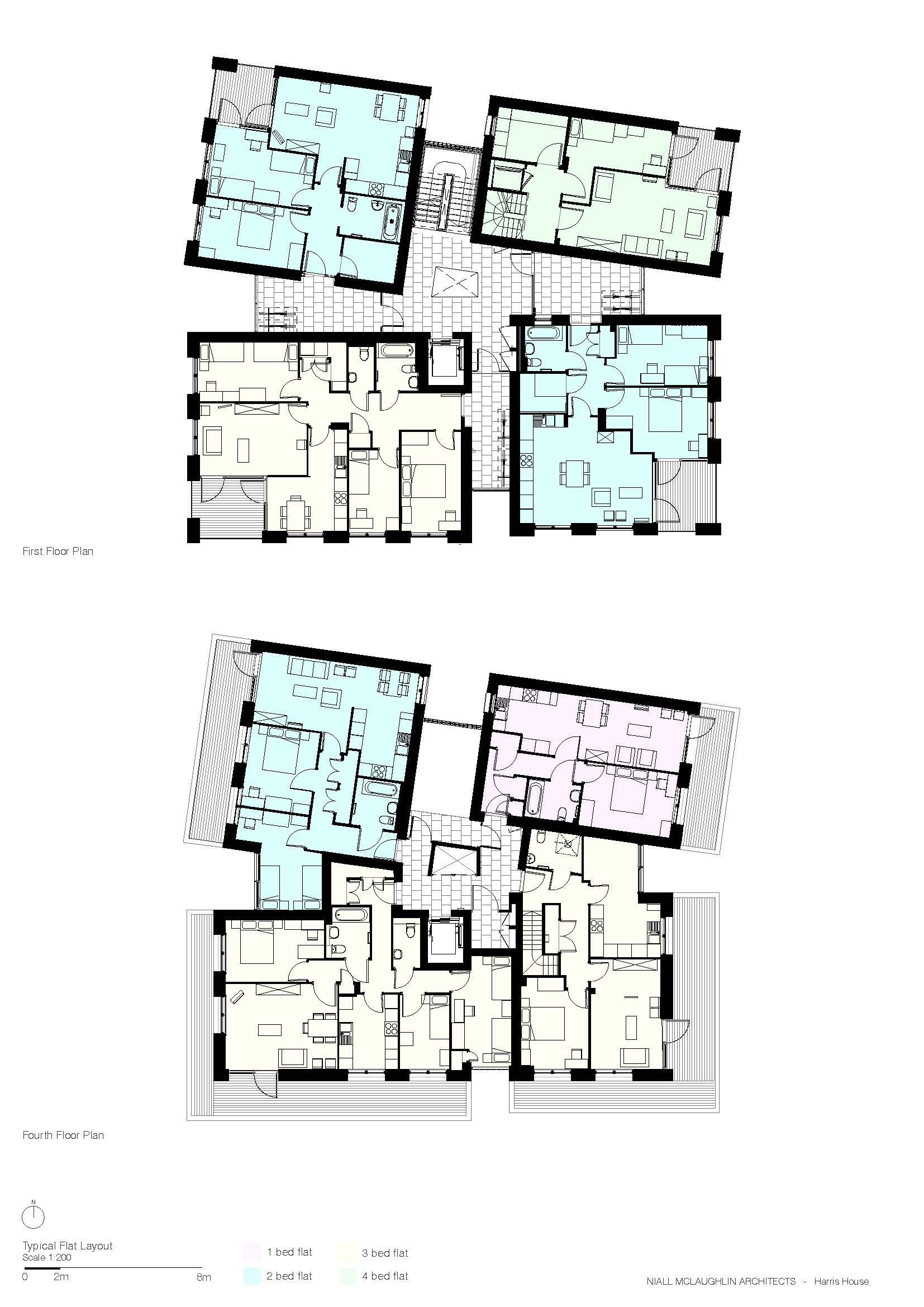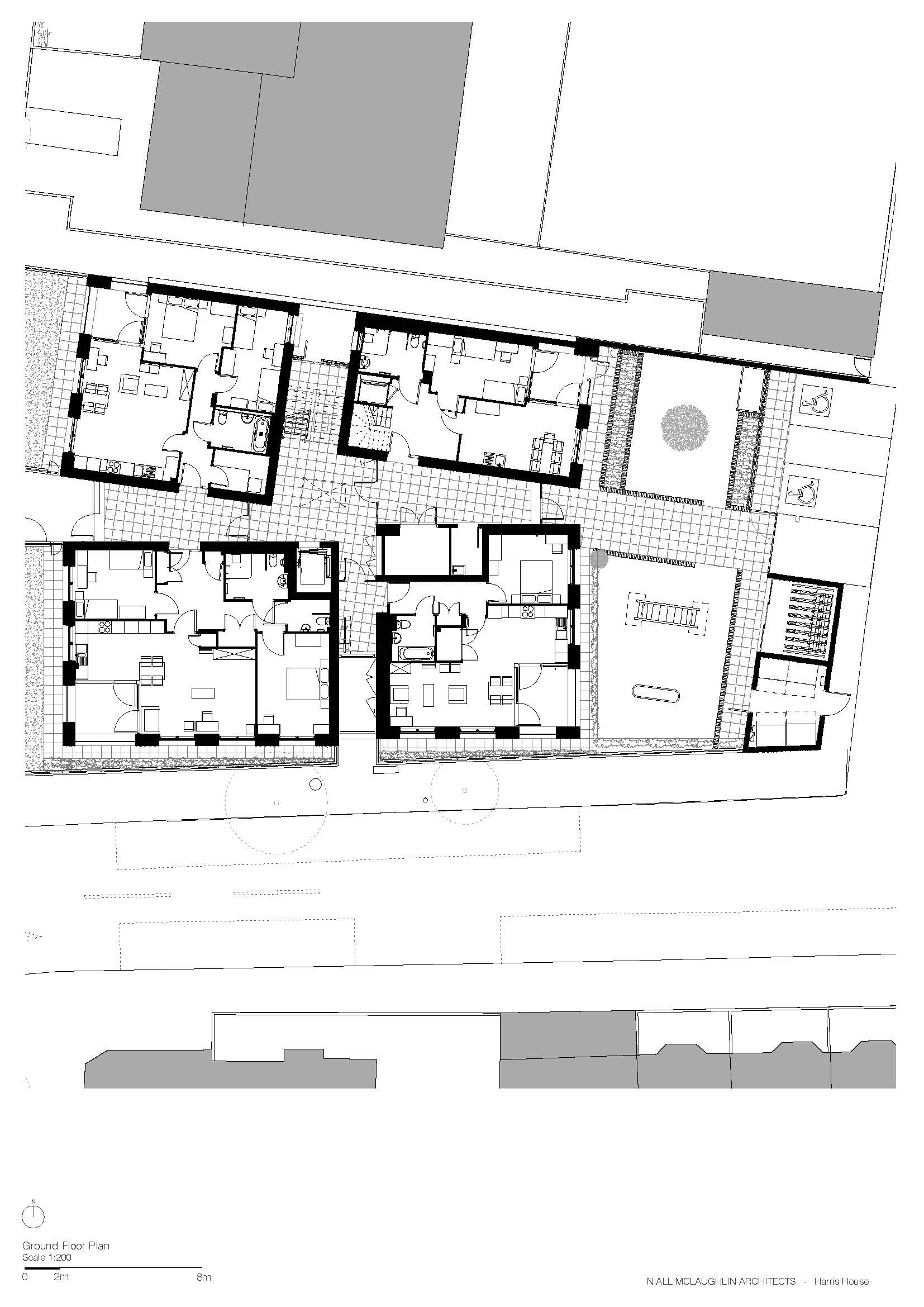Peabody Leytonstone
2015
Harris House is an affordable housing development in Leytonstone, East London named after Iron Maiden bassist Steve Harris. The project was developed for CBHA, a part of Peabody housing association working exclusively in Waltham Forest that also provide employment to their residents. CBHA approached us in 2011 with an initial brief for 17 units to a planning policy prescribed mix of one, two, three and four bedroom flats, including 2 wheelchair accessible units. All of the units are for social rent.
The building occupies a prominent corner site at the junction of High Road Leytonstone and a smaller scale residential road heading east toward Wanstead Flats. The high street is a jumble of 3 storey Victorian terraces and larger, detached late 20th century housing developments, its visual mix typical of many London high streets.
The new building is placed at the front of the site to reinforce the enclosure and scale of the main road and to form a termination of the existing housing development north of the site. An enclosed communal garden is placed at the rear of the building. A bend in the road allows the building to present a south-facing gable perpendicular to the street.
The plan is organised in four separate parts, each containing a flat or one floor of a maisonette unit. Externally these separated parts are treated as four individual buildings. Internally they are clustered around a circulation core containing a lift, a generous side-lit stair and a light well passing through each of the upper floors. The layout was influenced by the cluster block housing developments such as Keeling House designed by Denys Lasdun and by early social housing developments such as Peabody Square near Blackfriars in which the organisation of the plan articulates a distinction between the private and the common spaces that gives the circulation space access to daylight and views out.
The spaces between each of the blocks contain the entrances to the flats, which are enclosed from the circulation core by a glazed screen to form an individual entrance deck, a secure semi-external space for drying clothes, storing bikes and buggies. These flexible spaces are used to accommodate the irregular shape of the site, allowing each of the four blocks to retain an orthogonal footprint while responding to the specific conditions on each site edge. At the outer corner of each of the four blocks is a large inset balcony, orientated toward the distant views.
Each façade is composed of an array of single windows, framed by regular brick piers that support an expressed floor slab formed in prefabricated GRC panels. The curved head of the GRC panels over each window allows light into the deep window reveals. Openings to the inset balconies are treated as larger versions of the windows.
Construction work commenced in 2014 and was completed in September 2015.
